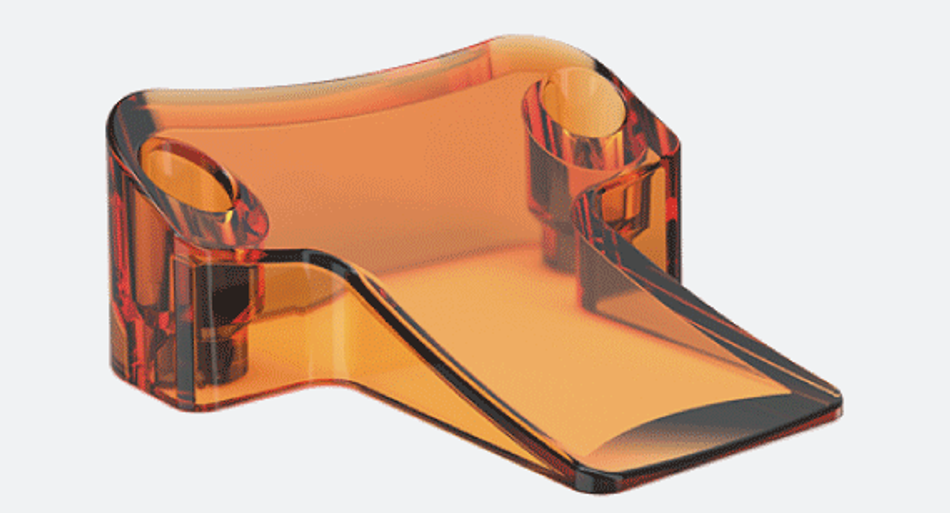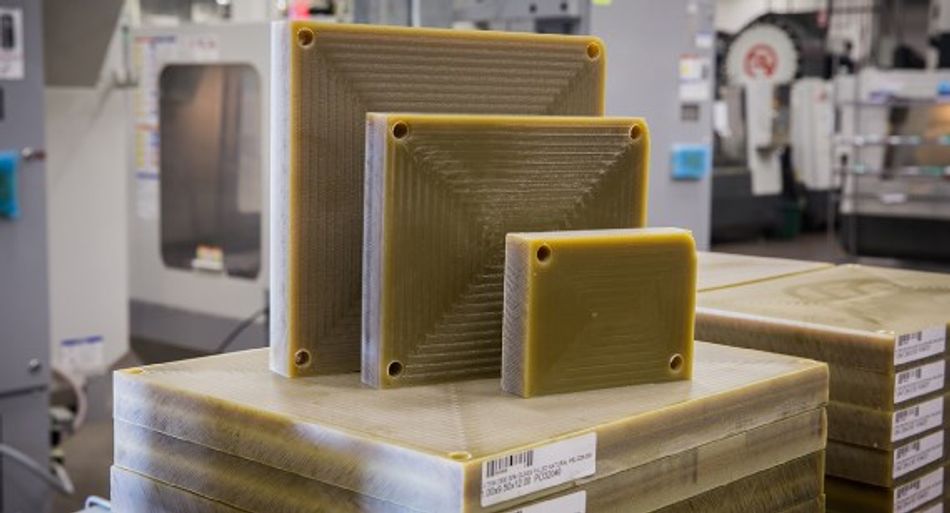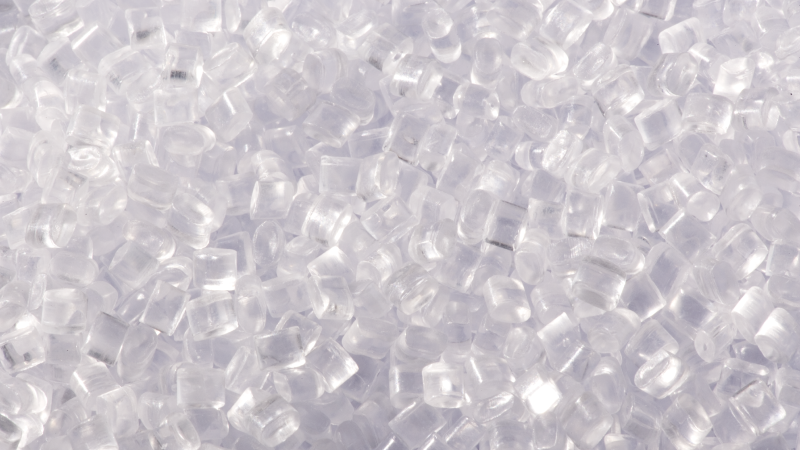Evaluating UV-Resistant Plastic Options
An evaluation of a range of durable materials to consider for high UV-resistance in plastic parts
Everyone knows they should apply sunscreen when lying on the beach or spending a lazy Saturday afternoon fishing. That’s because the sun’s ultraviolet (UV) rays can wreak havoc on unprotected skin, causing a painful sunburn or worse. Polymers suffer similar damage from UV radiation, albeit more slowly and far less dramatically than humans.
For instance, sunlight leads to yellowing and so-called “chalking” or whitening. This discolouration is more than cosmetic, however. Photodegradation can also reduce tensile and impact strength, making plastics brittle, prone to cracking, and susceptible to permanent deformation in the face of mechanical forces.
Add it all up and you’ll quickly see why it’s imperative to choose the right material when designing moulded products that will spend significant time outdoors. Fortunately, there’s a fair number of such UV-resistant materials available, all of which are candidates for plastic injection moulding, machining, or 3D printing. And even on plastics not considered UV-resistant, additives are often available that help make the material less prone to photodegradation.
In no particular order, then, here are the top seven UV-resistant polymers, along with some typical application examples.
Polycarbonate (PC)
One UV-resistant polymer that can be 3D printed (and machined or plastic injection moulded) is polycarbonate (PC). Material providers are quick to point out, though, that the resin used in stereolithography (SLA) 3D printers is “polycarbonate-like” and not a true polycarbonate. No matter, the properties are quite similar, and from a design perspective, the two are essentially interchangeable. PC is clear like glass (almost) but far more impact resistant—approximately 200 times stronger, in fact. It’s also tolerant of temperature extremes, making it a good choice for products that see regular outdoor use, such as goggles and face shields, windows for heavy equipment, see-through containers, and more, not to mention containers found in medical applications. Keep in mind though that polycarbonate ranks among the more expensive of UV-resistant polymers.

PMMA, Acrylic, or Plexiglass
Better known as acrylic or plexiglass, polymethyl methacrylate (PMMA) is a lower-cost yet harder alternative to PC. It's not as tough, and is, in fact, a bit brittle, but exhibits better optical clarity and scratch resistance than PC. Acrylic is also roughly half the weight of glass and much stronger besides. Available in a near rainbow of colours (for injection moulding) and with a continuous service temperature of 65° C, it’s common to see PMMA on outdoor signage, retail displays, and decorative panels. Protolabs doesn’t make signage but does routinely machine and mould this UV-resistant material for customers in the optical and scientific industries.

PTFE (Teflon)
You almost certainly refer to polytetrafluoroethylene (PTFE) by its trade name Teflon, the stuff of cookware and other non-stick surfaces. This well-known fluoropolymer boasts one of the lowest coefficients of friction available, and although its mechanical strength comes nowhere close to most engineering-grade polymers, it remains functional at far greater temperature extremes (-200°C to 260°C). In addition, PTFE is an excellent electrical insulator, is both flexible and fatigue resistant, and is known for its chemical inertness. It’s a favourite of medical product developers who use it to make heart patches, ligament replacements, and cardiovascular grafts. Scientists line reaction vessels and other laboratory equipment with PTFE, while automakers use it in valve stem seals, bearing liners, and head gaskets. At this time, we limit PTFE parts to our machining service, although, as you will see, there are several UV-resistant alternatives that are also suitable for plastic injection moulding.
POM, Acetal, or Delrin
One of these is polyoxymethylene (POM), aka acetal, Delrin, Celcon, and other well-known but often trademarked names. Like many polymers, POM is available with various “fills” to increase wear resistance, fatigue strength, or electrical properties, but even without these additives, it’s very tough. It offers a low coefficient of friction and is heat, wear, and UV-resistant, and therefore enjoys wide use in automotive and other outdoor applications. But due to POM's sensitivity to some acids and chlorine, care should be taken when using it in certain chemical environments.
PEI or Ultem
So does polyetherimide (PEI), or Ultem. As its name suggests, PEI is an exceptionally high-strength plastic resistant to sunlight, flame, high temperatures, a range of chemicals. It's also an excellent electrical insulator (i.e., has high dielectric strength). Here again, various fills are available to enhance PEI's already admirable qualities even further. It can also be produced in transparent or translucent versions. Because it withstands repeated short-term exposure to hot water and steam, Ultem sees broad usage in autoclaves and the medical instruments that go in them. Automakers use it for headlight reflectors and heat shields, electronics suppliers put PEI to work in connectors, enclosures, and mounting brackets, while aerospace manufacturers use PEI in everything from fuel valves and engine parts to food trays and steering wheels. Simply put, PEI is the switch hitter of choice for a variety of machined and injection moulded components.

PPS
Last but certainly not least on the UV-resistant hit parade is polyphenylene sulfide (PPS). As with Ultem (PEI) and, to a lesser extent, Delrin (POM), PPS is an exceedingly useful engineering-grade polymer. It, too, is flame-, chemical-, electrical-, and heat-resistant. It can be a bit brittle but is otherwise considered both strong and durable (especially when boosted with some glass fill). Because of this, it's widely used in the aerospace, automotive, and medical industries. At Protolabs, we stock PPS materials from Ryton or Fortron, where it's a favourite among those looking for robust injection-moulded parts.
Didn’t find the material you were looking for? That’s okay. It's important to note that manufacturers can achieve UV resistance in other ways. As noted earlier, many polymers that would otherwise get kicked out of the sunlight lover's club can be made more radiation-proof via a bit of glass, fibre, or metal fill. It's also possible to avoid photodegradation through mechanical means—for instance, PVC and CPVC pipes used in the great outdoors are often wrapped or painted with a UV-resistant coating, a simple yet expedient solution.
Lastly, part designers should ask themselves how long the product is expected to endure UV radiation. Unlike sunburns on the beach, photodegradation is a slow process. Suppose parts will only be exposed to the environment for a few months or even a year or two—does it really matter that they turn a bit yellow, provided they retain the needed electrical, thermal, or mechanical properties during their intended lifespan? If you want to explore other materials or discuss alternatives to making your parts more UV resistant, don’t resist reaching out to one of our applications engineers at customerservice@protolabs.co.uk or +44 (0) 1952 683047.

